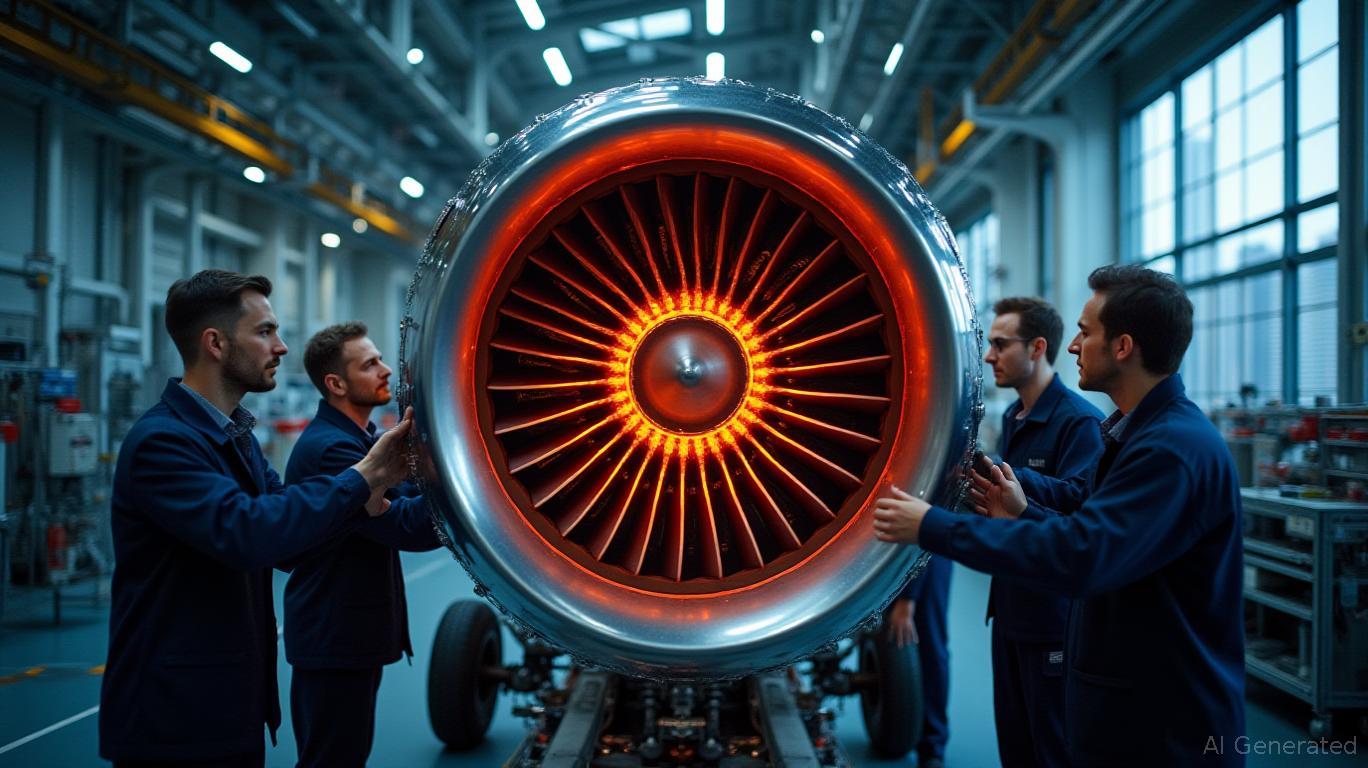Unlocking Value in Aerospace Engine Suppliers: Navigating Delays to Capitalize on Recovery
The aerospace industry is at a critical juncture. Delays in single-aisle aircraft production—driven by bottlenecks in engine supply chains—are reshaping the sector's dynamics. While manufacturers like Airbus and
grapple with missed delivery targets, the underlying issue offers a unique opportunity: engine suppliers positioned to resolve these bottlenecks could emerge as undervalued gems.
The Supply Chain Crisis: A Perfect Storm
The global shift toward fuel-efficient single-aisle aircraft (e.g., the Boeing 737 MAX and Airbus A320neo) has created unprecedented demand for engines. However, suppliers like CFM International (LEAP engine) and Pratt & Whitney (GTF engine) face challenges scaling production. Key issues include:
- Supply chain fragility: Component shortages, labor strikes, and geopolitical risks (e.g., China's trade policies) have disrupted output.
- Quality control hurdles: P&W's GTF engine recall due to defective parts has grounded hundreds of aircraft, straining maintenance capacities.
- Capacity constraints: Both CFM and P&W are racing to boost production to meet 2025 targets, but delays persist.
Identifying Undervalued Suppliers: CFM and P&W's Turnaround Potential
CFM International: GE's Hidden Opportunity
CFM (a joint venture of General Electric (GE) and Safran) supplies 80% of engines for narrowbody aircraft. Despite its dominance, GE's stock trades at 14x forward earnings, below its five-year average of 16x. This undervaluation reflects investor skepticism over its ability to ramp up LEAP engine production.
However, three factors suggest a turnaround:
1. Strategic investments: GE's $3.2 billion expansion of its Evendale, Ohio, facility aims to boost LEAP production by 20% in 2025.
2. Backlog leverage: With over 15,000 LEAP engines on order, GE can scale output as supply chains stabilize.
3. RISE program upside: Its open-fan RISE engine (targeting 20% fuel savings) could secure long-term contracts if technical hurdles are overcome.
Pratt & Whitney: RTX's Undervalued Asset
P&W, a subsidiary of Raytheon Technologies (RTX), faces near-term pain but holds long-term promise. RTX's stock trades at 12.5x forward earnings, near its five-year low, despite owning 40% of the narrowbody engine market.
Key positives:
1. GTF recall resolution: P&W's $1 billion investment in its Asheville facility has streamlined production, reducing defects.
2. GTF Advantage rollout: The upgraded engine variant (4% more thrust, 40% longer maintenance intervals) is on track for 2026 certification, addressing reliability concerns.
3. Airbus partnerships: P&W's role in the A220 and A320neo programs ensures steady demand.
Why Now? Bottleneck Resolution is Imminent
Analysts project that engine suppliers will stabilize production by mid-2026, driven by:
- Inventory restocking: Airlines are prioritizing orders to rebuild post-pandemic fleets, creating urgency for suppliers.
- Geopolitical tailwinds: U.S.-China tensions may push Boeing and Airbus to diversify suppliers, favoring U.S.-based firms like GE and RTX.
- Technological advancements: P&W's ceramic-matrix composites and GE's open-fan designs could reduce long-term maintenance costs, boosting demand.
Investment Thesis: Buy the Dip, Hold for Recovery
Recommended action: Accumulate positions in GE and RTX at current depressed valuations. Both stocks offer 15–20% upside potential if supply chains normalize by 2026.
- GE: Target price $100 (vs. $78 today) based on a 16x P/E multiple and improved margins from LEAP ramp-up.
- RTX: Target price $220 (vs. $175 today) assuming GTF reliability gains and A220/A320neo demand.
Risks to Consider
- Further delays: Labor strikes or component shortages could prolong bottlenecks.
- Regulatory hurdles: FAA/EASA certification delays for new engine variants.
- Commodity prices: Steel and titanium costs could squeeze margins.
Conclusion: Supply Chain Recovery = Supplier Reward
The aerospace engine sector is a classic “value trap” turned into a “value play.” Suppliers like GE and RTX are undervalued due to near-term pain but are primed to capitalize on recovery. Investors who act now could reap rewards as production bottlenecks ease and demand for narrowbody aircraft surges.
The next few quarters will separate the winners from the losers. Position yourself early.

Comments
No comments yet